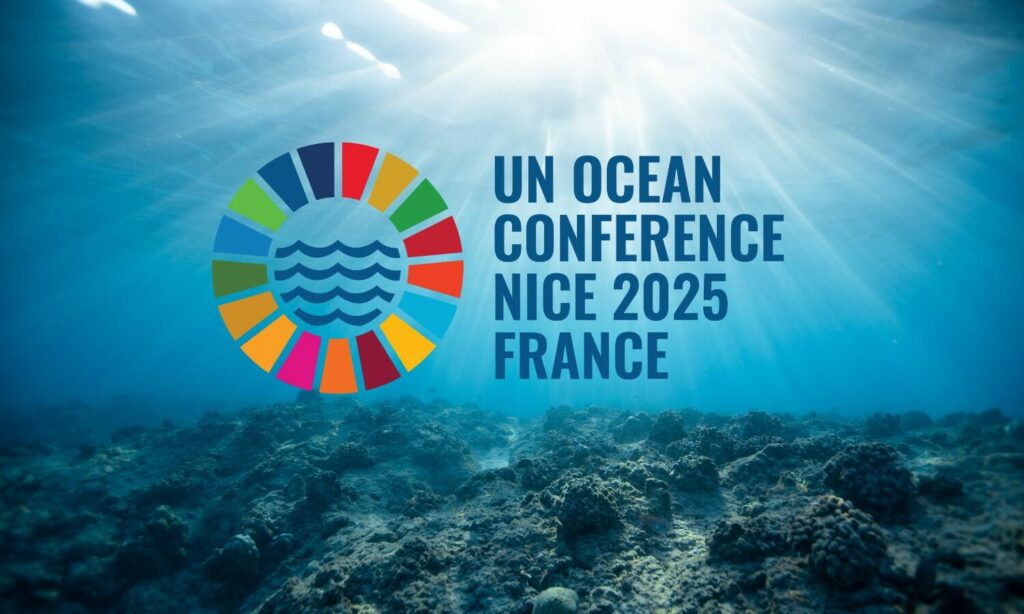UN Oceans Conference 2025

- 21 Jun 2025
In News:
The third United Nations Oceans Conference (UNOC) was recently held in France, witnessing major developments in international marine conservation. One of the most significant outcomes was the near-finalisation of the Biodiversity Beyond National Jurisdiction (BBNJ) agreement, also referred to as the High Seas Treaty.
As of now, 56 countries have ratified the treaty out of the required 60, bringing it close to the threshold for becoming legally binding. Notably, India and the United States have not yet ratified the agreement, although India has officially stated it is in the process of doing so.
About the BBNJ Treaty
- The BBNJ Treaty is a legally binding agreement developed under the framework of the United Nations Convention on the Law of the Sea (UNCLOS).
- Its aim is to regulate the use and protection of biodiversity in areas of the ocean that lie beyond national jurisdictions, also known as the high seas.
- The core objectives of the BBNJ Treaty include the creation of marine protected areas (MPAs) in international waters, regulation of marine genetic resources, enforcement of environmental impact assessments (EIAs) for activities in these regions, and capacity-building and technology transfer to support developing countries.
- The treaty is crucial because the high seas cover about 64% of the ocean’s surface and are largely unregulated.
- The BBNJ aligns with the Convention on Biological Diversity (CBD) target of conserving 30% of marine and coastal areas by 2030. Once the treaty secures the required number of 60 ratifications, it will enter into force after a 120-day waiting period. This will pave the way for the first Conference of Parties (COP) under the BBNJ to be held by late 2026.
Challenges to Implementation
- A major hurdle to the implementation of the BBNJ is the equitable sharing of benefits from marine genetic resources found in the high seas. These resources include unique life forms from deep-sea ecosystems that could have commercial applications in fields like pharmaceuticals and biotechnology.
- Since the high seas are global commons and not owned by any single nation, there is no clear consensus on how benefits should be shared.
- Environmental groups have also raised concerns that without a strong ban on resource extraction, the treaty may fall short of its conservation goals and could lead to unchecked exploitation of oceanic biodiversity.
Key Outcomes and Commitments from UNOC 2025
While the treaty itself is still awaiting full ratification, the conference saw a number of voluntary national and institutional commitments toward marine protection and sustainable ocean governance:
- The European Commission pledged €1 billion to support ocean conservation, marine science, and sustainable fisheries.
- French Polynesia committed to creating the world’s largest marine protected area, covering approximately five million square kilometres, equivalent to its entire exclusive economic zone (EEZ).
- New Zealand announced a contribution of $52 million to enhance ocean governance, science, and management in the Pacific Islands region.
- Germany launched an immediate action programme worth €100 million for the recovery and clearance of legacy munitions in the Baltic and North Seas.
- A coalition of 37 countries, led by Panama and Canada, initiated the High Ambition Coalition for a Quiet Ocean, the first global initiative to address ocean noise pollution.
- Italy committed €6.5 million to strengthen surveillance by the Coast Guard in marine protected areas and around oil platforms.
- Canada contributed $9 million to the Ocean Risk and Resilience Action Alliance, aiming to help Small Island Developing States (SIDS) and coastal countries build resilience against climate change using nature-based solutions.
- Spain pledged to establish five new marine protected areas, increasing its protected marine territory to 25%.
- A group of UN agencies introduced the One Ocean Finance initiative, which aims to mobilize investment from blue economy sectors to fund ocean sustainability.
